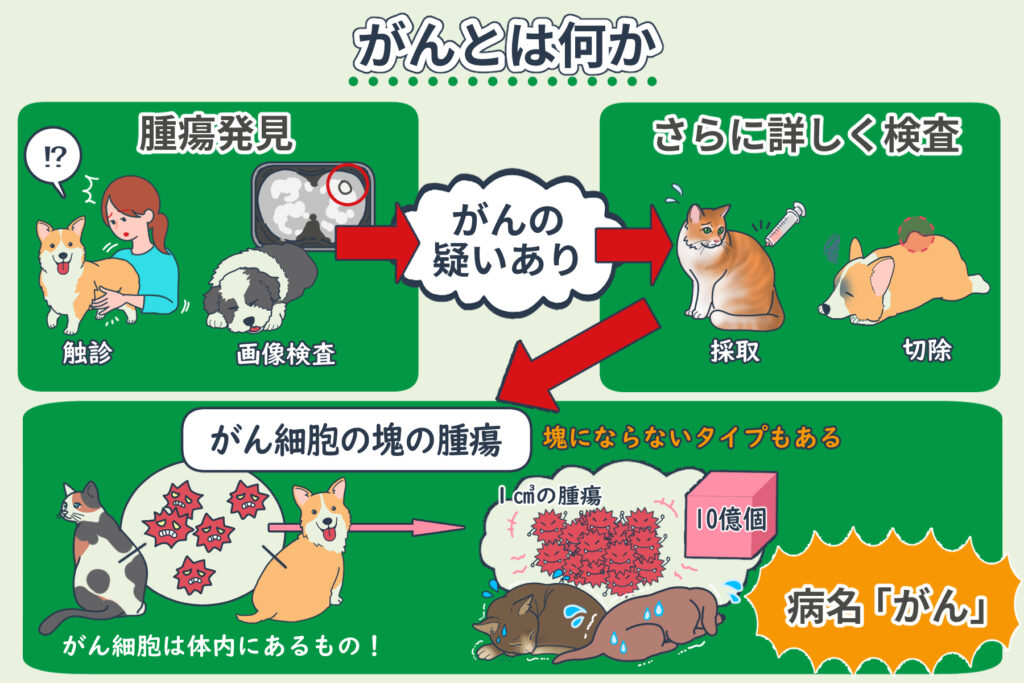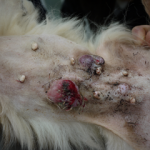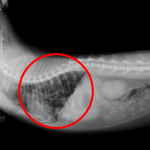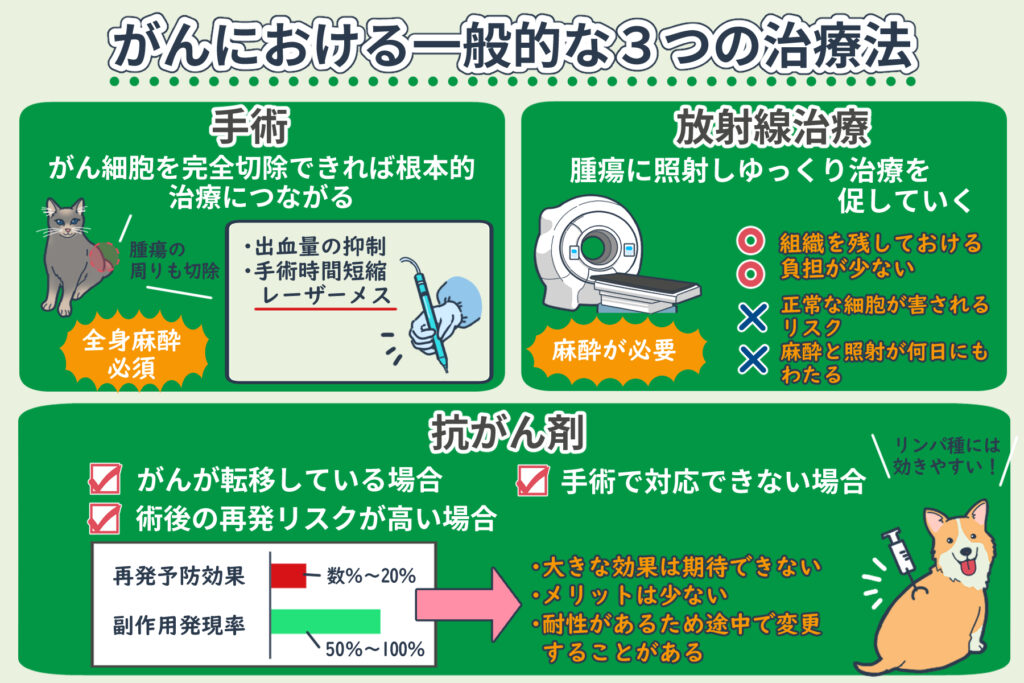Over the past 10 to 20 years, the incidence of cancer in dogs and cats has been rapidly increasing. This is closely related to their longer lifespans. With more pets being kept indoors, illnesses and abnormalities are detected earlier. Traffic accidents are also on the decline. As pet owners become more conscious of disease prevention, deaths due to heartworm have significantly decreased. It used to be common for dogs to die from infections or injuries around the age of five, but now living for over 10 years is the norm. Diet also plays a role. Let’s consider ways to counteract this issue.
- Cancer is a disease name, and it is not defined by having a specific number of cancer cells.
- Commonly diagnosed cancers in dogs include mammary gland tumor (breast cancer), mast cell tumor, malignant lymphoma, and squamous cell carcinoma.
- In addition to conventional treatments, there are also natural therapies for cancer. Focusing on immune system improvement is particularly important.
目次
It’s natural for cancer to increase
No matter how much lifespans are extended, a time will come when dogs will be called to heaven. If it’s not from old age, their lives will be taken by some illness or injury.
Currently, the most common causes of death in dogs are cancer and heart disease.
Both are difficult to cure, but heart disease can be managed for a long time with medication. Conversely, cancer, aside from some early-stage cases, is not only difficult to cure but also hard to control. Even with standard treatment, extending the life just a bit is a challenge.
With the cancer incidence rate clearly higher in older dogs compared to younger ones, as dogs avoid dying from other diseases and live longer, the number of dogs dying from cancer increases.
What exactly is cancer?

Cancer: Understanding the Disease
Cancer is the name of a disease. It might help to think of it as a condition in which millions to billions of cancer cells exist within a dog’s body. The term “cancer” is sometimes used to refer to a mass of cancer cells, but it is more appropriate to use the term “tumor.”
A tumor of 1 cubic centimeter consists of roughly one billion cancer cells. For a sugar cube-sized tumor, it would be about three billion cells.
In fact, it is normal for a dog to have one or two cancer cells in its body. It is likely that there are hundreds to thousands of cancer cells. However, this number does not constitute cancer, and virtually no concern for cancer should arise for many years.
※ For humans, it is said that it takes about ten years for a single cancer cell to repeatedly divide and form a mass the size of a sugar cube.
Determining “Cancer”
Cancer is a disease name. It is not defined by a specific number of cancer cells.
When a mass of cancer cells (tumor) is detected through a physical examination or imaging, it is often referred to as “suspected cancer.” If a subsequent biopsy or histological examination of the removed tumor reveals it to be a mass of cancer cells, it is diagnosed as cancer.
There are also types of cancer that do not form masses. These can be diagnosed through blood tests, fluid examinations, or by examining swollen lymph nodes.
※ It is common to refer to mass-forming types as “cancer” and to include non-mass-forming types under the general term “cancer.”
The Origin of Cancer Cells
Where do cancer cells come from? They are not transmitted from other dogs nor do they spontaneously appear from nothing. Initially normal cells undergo changes and become cancer cells.
A dog’s body consists of several to tens of trillions of cells. Each cell has a nucleus containing DNA, which stores various genetic information. The first step in the development of cancer is a mutation or alteration in this DNA.
Hearing about DNA mutations might sound scary, but it is actually a common phenomenon. Mutations probably occur tens of thousands of times each day. Organisms have the ability to repair minor mutations in DNA, making it difficult for normal cells to transform into cancer cells easily.
However, if DNA sustains continuous damage beyond repair or if the repair mechanisms fail to function correctly, normal cells may lose their ability to maintain normalcy.
This is the birth of cancer cells.
※ There are various hypotheses regarding the mechanisms of cancer development.
Causes of DNA Damage
There are several reasons why DNA may become damaged. Common causes include reactive oxygen species, ultraviolet rays, radiation, chemicals, and anti-cancer drugs. These factors can oxidize DNA, break it, add extraneous elements to it, or cause abnormal bonds within the DNA, thereby damaging it.
Additionally, failures in DNA replication during cell division can occur.
Mechanisms of Attacking Cancer Cells – Natural Healing Power and Immunity
It’s not the end of the road or a countdown just because cancer cells have formed. Most cancer cells actually disappear without any treatment. Animals have an extraordinary system in place to eliminate cancer cells.
One such system is apoptosis. This is a self-destruction program encoded in DNA. It activates when DNA repair fails, and the cell is on the verge of becoming a cancer cell. The DNA of cells that activate this program gets fragmented, leading to cell death.
Another mechanism is natural immunity, where natural killer cells play a significant role. They find and destroy cancer cells.
Adaptive immunity is a system wherein multiple immune cells work together to destroy cancer. Immune cells that detect cancer and signal others to attack, and those that use this signal to target the cancer cells, all have specific roles in this process.
Types of Cancer in Dogs

Common cancer diagnoses in dogs include mammary gland tumors (breast cancer), mast cell tumors, malignant lymphoma, and squamous cell carcinoma.
Breast Cancer
 This cancer primarily occurs in female dogs. Half of mammary gland tumors are benign, while the other half are malignant breast cancers. It is more common in unspayed dogs, and any lump found from the chest to the abdomen should be a cause for concern. These tumors form in the mammary glands and often metastasize to other glands. They can grow rapidly, causing the skin to break, bleed, and become infected.
This cancer primarily occurs in female dogs. Half of mammary gland tumors are benign, while the other half are malignant breast cancers. It is more common in unspayed dogs, and any lump found from the chest to the abdomen should be a cause for concern. These tumors form in the mammary glands and often metastasize to other glands. They can grow rapidly, causing the skin to break, bleed, and become infected.
While early removal is ideal, once it progresses, it may metastasize to lymph nodes or the lungs, significantly worsening the prognosis.
*Even at an early stage, there is a possibility of microscopic metastasis.
- Mammary Gland Tumors (Breast Cancer) in Dogs—Tumor Tests, Symptoms, Surgery, Treatment, Tips for Improvement and Cure
- Cancer (Tumors) in Dogs—Symptoms, Tests, Surgery, Treatment, Diet, Tips for Cancer Improvement and Cure
- Is Cordy Consultation Effective for Benign Mammary Gland Tumors in Dogs?
Mast Cell Tumors
Mast cells are cells deeply involved in inflammation and allergies, and they have the ability to release histamine. This disease occurs when mast cells become cancerous. Excessive release of histamines can lead to gastric ulcers, and in some cases, can cause death due to shock.
※Histamine is a representative substance involved in allergies and inflammation. It also has various effects such as promoting the secretion of stomach acid.
Most often, it appears on the skin and can be found by pet owners. However, it is not always clear if it is a mast cell tumor, so it is safer to have it examined.
Although the name of the disease includes the word “mast,” it is not related to the dog being overweight.
- Mast Cell Tumors in Dogs: Causes, Symptoms, Diagnostic Methods, Treatments, and Tips for Improvement and Recovery
- Mast Cell Tumors in Cats: Symptoms, Surgery, Treatment Methods, and Tips for Improvement and Recovery
- Can Palladia and Cordy Be Used Together for Dogs with Mast Cell Tumors?
- Improvement Examples of Spleen Cancer (Lymphoma/Mast Cell Tumors) in Cats
Malignant Lymphoma
 One of the types of white blood cells, the lymphocytes, become cancerous. There is no benign form once it is called lymphoma. Although referred to as a type of blood cancer, it can be noticed by the swelling of lymph nodes. It can also form masses in internal organs.
One of the types of white blood cells, the lymphocytes, become cancerous. There is no benign form once it is called lymphoma. Although referred to as a type of blood cancer, it can be noticed by the swelling of lymph nodes. It can also form masses in internal organs.
Unusually, chemotherapy is likely to be effective against this cancer. However, even if it appears to improve, it usually recurs. Chemotherapy alone cannot eliminate all cancer cells.
Steroids are also often used. They can enhance the effects of chemotherapy and are expected to improve the quality of life by boosting energy levels and appetite.
- Usage of Cordy for Mesenteric Lymphoma in Dogs (Miniature Dachshund)
- Usage Examples for High-Grade Abdominal Lymphoma in Dogs (Shih Tzu)
- Usage of Cordy for Lymphoma in Dogs (Yorkshire Terrier)
- Case of Disappearance of Abdominal Malignant Lymphoma in Cats (1 Month Prognosis, Lung Metastasis Present)
- Long-term Maintenance Case of Suspected Lymphoma in Cats
- Improvement Case of Splenic Cancer (Lymphoma/Mast Cell Tumor) in Cats
- Case of Controlling Lymphoma/Thymoma in Rabbits Without Burden
Squamous Cell Carcinoma
Common sites include the mouth, nasal cavity, paws, and anus. While it is ideal to remove all of the cancer, it is often difficult depending on the location. In some cases, surgery may lead to significant facial deformation or the loss of a limb.
※ During surgery, it is crucial to assume that the cancer has spread to the surrounding areas and to remove it with a sufficient margin, not just the tumor alone.
- Squamous Cell Carcinoma in Cats – Causes of Tumors, Symptoms, Surgery, Treatment Methods, Tips for Improvement and Cure
- Squamous Cell Carcinoma in Dogs – Causes, Symptoms, Surgery, Treatment, and Tips for Improvement and Recovery
- Example of Using Cordy for Squamous Cell Carcinoma in Cats
- Cancer (Tumors) in Cats – Symptoms, Tests, Surgery, Treatment, Diet, and Tips for Improvement and Recovery
General Cancer Treatments

Surgery and chemotherapy are the common treatments. Some university-affiliated hospitals also provide radiation therapy.
Surgery
A scalpel is used to excise the tumor. If all the cancer cells can be removed, this can be a fundamental treatment. Since the boundary between cancer and normal tissue is not clear, not only the tumor but also the surrounding tissue (taking a margin) is excised to avoid leaving any cells behind.
Laser scalpels are gradually becoming more common as an alternative to metal scalpels. Laser scalpels significantly reduce bleeding during surgery, making transfusions unnecessary and greatly shortening the surgery time.
General anesthesia is inevitably required for surgery, so risks must be considered for elderly dogs.
Chemotherapy
Chemotherapy is chosen when the cancer has already metastasized, cannot be addressed by surgery, or has a high likelihood of recurrence after surgery.
The treatment’s effectiveness in completely eliminating large tumors is limited. Tumors often shrink, but whether this contributes to prolonged survival is uncertain.
Lymphoma, which is a type of blood cancer, cannot be treated with surgery but is a rare type of cancer that responds well to chemotherapy. If the patient has the strength to endure the side effects, chemotherapy should be considered.
## Postoperative Chemotherapy
It’s not very clear how effective postoperative chemotherapy is in preventing recurrence. I estimate the effectiveness to be around 2% to 20%. The side effects depend on the type and dosage of the chemotherapy drug, but the incidence of side effects can range from 50% to 100%. Thus, the actual benefits are minimal.
Chemotherapy has the issue of resistance, meaning that its effectiveness diminishes over time, rendering continued treatment less valuable. Hence, switching to a different chemotherapy drug mid-treatment may be necessary.
- Chemotherapy for Cancer Treatment in Dogs and Cats – Side Effects, Precautions, and More
- Targeted Cancer Therapies for Dogs and Cats
- Chemotherapy Protocols and Types for Lymphoma in Cats and Dogs
- Minimizing Exposure to Anticancer Drugs During Pet Cancer Treatment
- Why Side Effects of Chemotherapy Occur in 90% of Cases
- Considering Chemotherapy for Your Dog or Cat? Understanding the Risks of Side Effects
### Radiation Therapy
Radiation therapy involves directing radiation at the tumor. While it might evoke an image of the cancer being burned away, in reality, the beneficial effects appear gradually. This method preserves the surrounding tissues, minimizing the burden on the animal compared to surgery. If successful, it offers significant advantages.
Administering a single high dose of radiation can destroy normal cells, so the treatment is divided over several days.
The main issue here is anesthesia. Unlike humans, animals cannot stay still during radiation therapy, so they need to be anesthetized for the duration of the treatment. Given that anesthesia may need to be administered multiple times, careful management of the animal’s health is crucial, including instructions for fasting.
Most general animal hospitals do not have the necessary radiation equipment. Large animal hospitals, such as university-affiliated ones, handle these treatments.
The amount of radiation that can be administered is limited, so radiation therapy cannot be used for recurrent cancer at the same site.
## Alternative Cancer Therapies (Natural Therapies)
Some animal hospitals offer treatments beyond conventional therapies. These include advanced methods like immunotherapy, hyperthermia (including laser thermotherapy), high-dose vitamin C drips, and ozone therapy. Additionally, there are natural therapies like homeopathy, homotoxicology, Eastern medicine, and supplement therapy.
A common feature of these treatments is that they generally impose less burden on dogs. They can be combined with other treatments with minimal risk of side effects or complications.
Unfortunately, these therapies are not yet widely adopted. If you’re interested, consider consulting an animal hospital that provides these treatments.
## The Necessity of Improving Immunity
Many people know that decreased immune function can make it easier for cancer to develop and spread. Thus, leveraging immunity to suppress cancer is a very natural and logical approach.
However, Japanese medical practice tends to overlook the importance of the immune system. There may be various reasons for this, but it seems disadvantageous for pet owners who wish for treatments that place less burden on their pets.
Unfortunately, surgeries, chemotherapy, and radiation do not enhance immunity; rather, they tend to suppress it. I can’t help but feel that the reason treatment efficacy has plateaued is due to a lack of measures addressing immune suppression.
While controlling immunity may seem very challenging, it’s actually not as difficult as it might appear. There are aspects that can be improved through lifestyle adjustments, such as diet, stress, exercise, and sleep.
Take stress, for example. We already know that feeling happy or having a good laugh can boost immune strength. Conversely, it’s easy to understand that excessive stress can lower immunity. Dogs perceive stress in various ways, so be especially attentive to them during treatment.
Boosting Immunity in Cancer Treatment for Pets
When a pet is diagnosed with cancer, there are often cases where aggressive treatments that stress the body cannot be pursued due to reasons related to age or physical strength.
Even in such cases, if we can manage immune support without burdening the body, we believe it can lead to peaceful days for the pet.
In our research laboratory, we are continuing studies to determine whether administering Cordy at times of immune suppression caused by surgery or chemotherapy can accelerate immune recovery. We are also researching whether Cordy contributes to maintaining immune strength.
If you have any questions, please contact us.
監修獣医師:林美彩 所属クリニック:chicoどうぶつ診療所

代替療法と西洋医学、両方の動物病院での勤務経験と多数のコルディの臨床経験をもつ。 モノリス在籍時には、一般的な動物医療(西洋医学)だけでは対応が困難な症例に対して多くの相談を受け、免疫の大切さを痛烈に実感する。
ペットたちの健康維持・改善のためには薬に頼った対処療法だけではなく、「普段の生活環境や食事を見直し、自宅でさまざまなケアを取り入れることで免疫力を維持し、病気にならない体づくりを目指していくことが大切である」という考えを提唱し普及活動に従事している。
所属:





